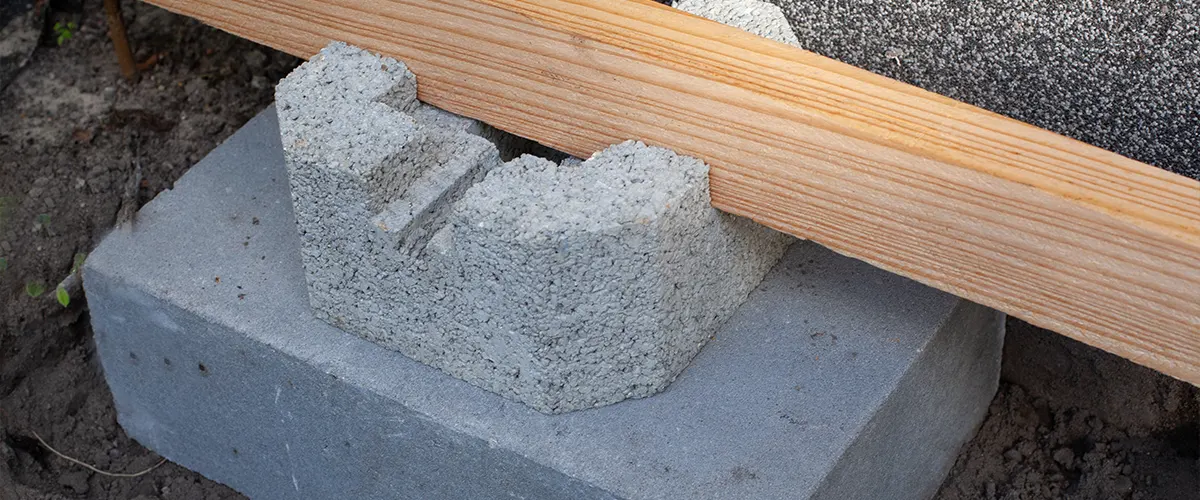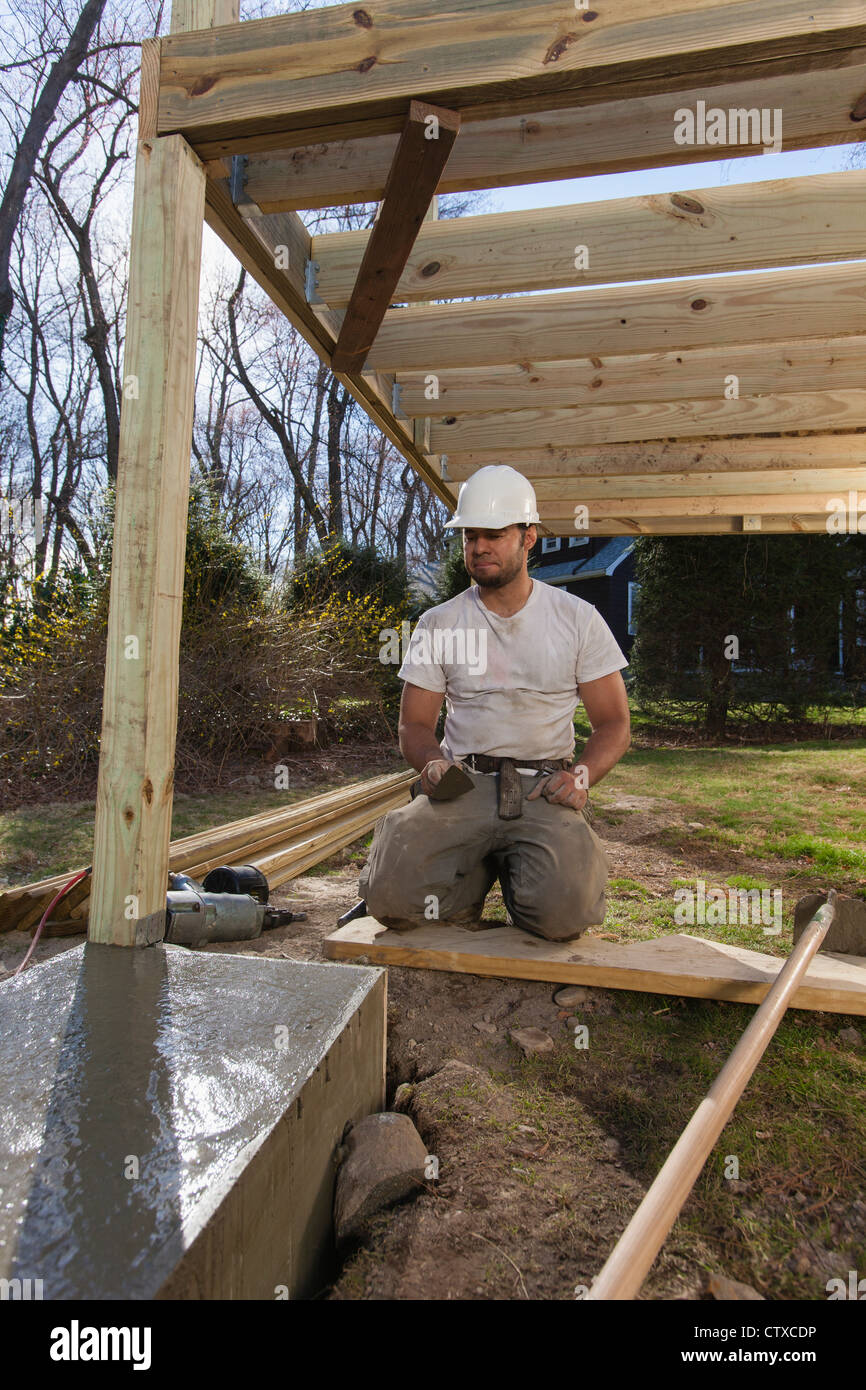Choosing the Right Deck Footings for Security and Longevity
When it comes to constructing a deck, among the most important decisions you will certainly make is selecting the ideal footings for stability and durability. The long life and safety and security of your deck depend greatly on the type of grounds you choose, as they supply the important assistance and security to withstand the test of time. With a myriad of options offered, it can be overwhelming to identify which footings are best fit for your certain needs. In this discussion, we will certainly check out the different kinds of deck footings, take into consideration the important elements to consider when choosing, and explore the benefits and drawbacks of various alternatives. By the end, you will certainly have a more clear understanding of the choices available and be much better outfitted to make a notified choice for your deck job.
Sorts Of Deck Footings
These grounds consist of a cylindrical hole filled up with concrete, which supplies a strong structure for the deck articles. Concrete pier footings are reasonably very easy to install and use outstanding stability, making them a popular option for lots of deck jobs.
An additional sort of ground is the helical pile footing. Helical heaps are steel shafts with helical plates attached to them. These footings are installed by screwing them right into the ground, which develops a secure foundation for the deck. Helical pile footings are excellent for locations with challenging dirt conditions, as they can be mounted in practically any kind of kind of dirt. If required., they also allow for very easy modification and leveling of the deck.
Additionally, some builders opt for precast concrete footings. These grounds are made of resilient concrete and can be found in different sizes and shapes to accommodate various deck layouts. Precast concrete footings are convenient to mount and supply a stable base for the deck framework.
Lastly, another alternative is the post-in-anchor ground system. This kind of footing includes driving a steel anchor into the ground and connecting it to the deck article. It provides flexibility in regards to positioning the deck posts and is suitable for decks with lightweight structures.
When picking the ideal kind of deck footing, it is important to think about factors such as dirt problems, deck tons, and neighborhood building regulations (Deck Footings). Consulting with an expert contractor or structural engineer can help guarantee the proper ground is selected for a steady and secure deck
Aspects to Take Into Consideration When Choosing Footings
When choosing the ideal grounds for a deck, it is critical to meticulously consider different elements such as dirt problems, deck lots, and adherence to local building ordinance. These elements play a considerable role in making certain the security and durability of the deck structure.
The type of dirt on which the deck will be developed determines the kind of grounds called for. On the other hand, decks developed on clay or extensive dirts may require grounds that can accommodate the soil's propensity to expand and contract.
An additional crucial variable is the deck load. The weight of the deck, consisting of the materials utilized and any potential online loads such as furnishings or gatherings, should be taken into consideration when choosing grounds. The grounds should be developed to birth the weight of the deck and distribute it uniformly to protect against any type of structural problems or failures.
Last but not least, adherence to neighborhood building regulations is extremely important. Building regulations vary from region to region, and it is crucial to comply with the certain requirements established by the local authorities. Deck Footings. These codes make sure that the deck is built safely and satisfies the necessary requirements for structural stability and load-bearing ability
Concrete Grounds: Cons and pros

Concrete grounds supply a number of benefits and drawbacks when utilized as the structure for a deck. On the favorable side, concrete footings give superb stability and durability.
An additional benefit of concrete grounds is their adaptability. They can be poured right into various shapes and sizes to fit various deck styles and arrangements. Concrete footings can be tailored to fit the particular needs and demands of the deck structure.
However, there are additionally some disadvantages to using concrete grounds. This can increase the general price of the deck job and might need professional support.

Helical Piers Vs. Sonotubes: Which Is Better?
In thinking about the structure alternatives for a deck, the contrast in between helical piers and sonotubes is vital in figuring out the exceptional option. They are turned into the ground using hydraulic equipment, providing a secure and sturdy structure for the deck.
The helical plates on the piers create a solid grip with the soil, stopping any kind of movement or shifting of the deck. Sonotubes, on the other hand, rely exclusively on the concrete filling up for security, which might not use the very same degree of toughness and resistance.
In terms of setup, helical piers are fairly easier and faster to set up contrasted to sonotubes. The hydraulic click here to find out more machinery utilized to twist the piers into the ground guarantees a fast and effective procedure. Sonotubes, on the other hand, require digging openings and pouring concrete, which can be labor-intensive and lengthy.
In addition, helical piers are an even more functional alternative. If required, they can be made use of in different dirt conditions and can be adjusted or strengthened. Sonotubes, on the various other hand, may need added assistance, such as rebar, in particular dirt conditions or locations with high load demands.
Choosing the Right Footings for Your Deck's Measurements
For optimum structural integrity, it is important to carefully choose the proper grounds that straighten with the measurements of your deck. The measurements of your deck, including its elevation, size, and size, play a significant role in figuring out the kind and size of footings needed.
When picking grounds for your deck, it is essential to take into consideration the load-bearing ability of the dirt. The weight of the deck, incorporated with the weight of any furnishings or people on it, exerts a considerable pressure on the footings (Deck Footings). It is essential to select grounds that can effectively support this weight without why not try these out changing or sinking over time.
Bigger decks with higher dimensions require bigger grounds to offer adequate security and assistance. The form of the grounds, whether they are square or round, depends on the style and layout of the deck.
Verdict
In conclusion, choosing the ideal deck grounds is important for ensuring stability and sturdiness. Elements such as the kind of footings, the deck's dimensions, and the benefits and drawbacks of different alternatives ought to be taken into consideration. Concrete footings supply stamina and long life, yet may be much more costly and taxing to mount. Helical piers and sonotubes have their own benefits and drawbacks. Inevitably, selecting the proper grounds for your deck's specific demands is essential for a lasting and effective framework.
These footings consist of a cylindrical hole filled up with concrete, which gives a strong structure for the deck posts. Concrete pier footings are fairly very easy to install and provide superb security, making them a prominent selection for numerous deck jobs.
Precast concrete grounds are convenient to mount and offer a steady base for the deck framework.
It uses adaptability in terms of placing the deck articles and is ideal for decks with light-weight frameworks.
Concrete footings offer several advantages and downsides when made use of as the structure for a deck.